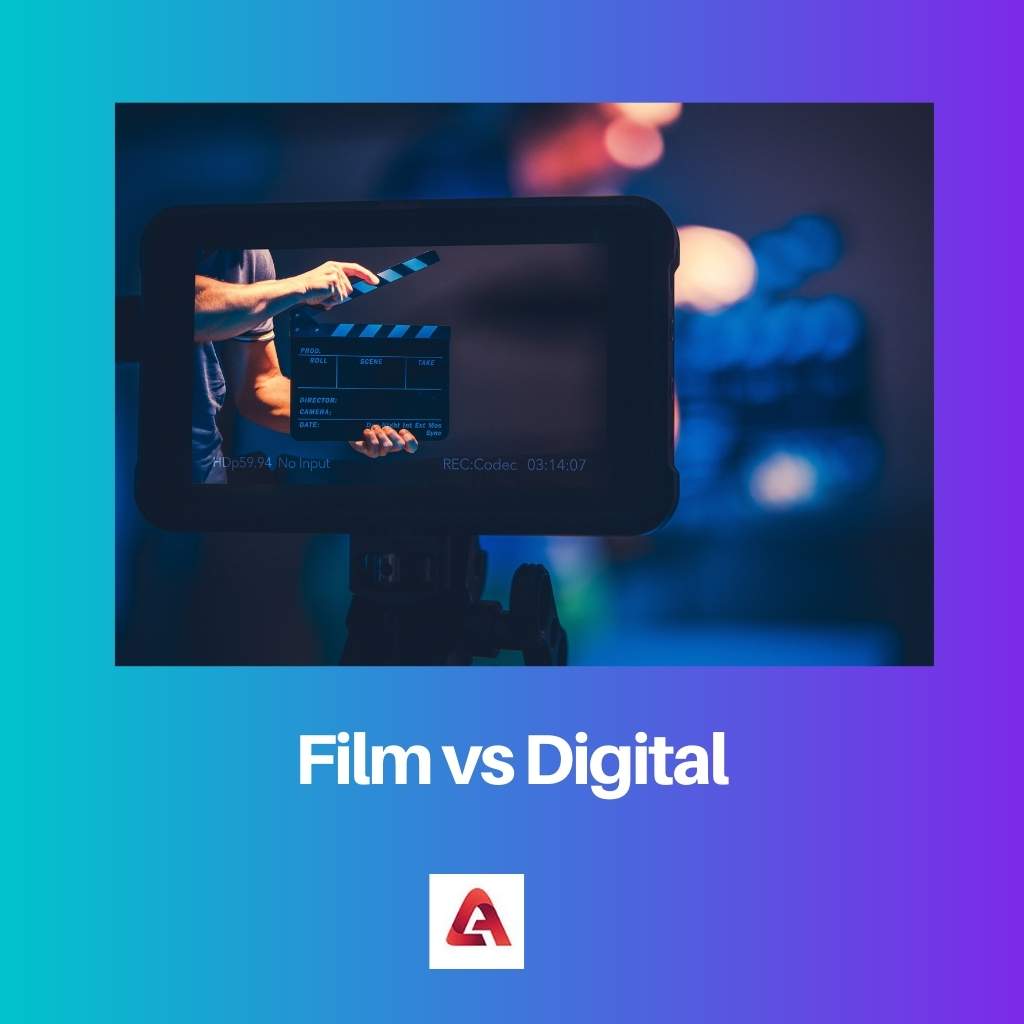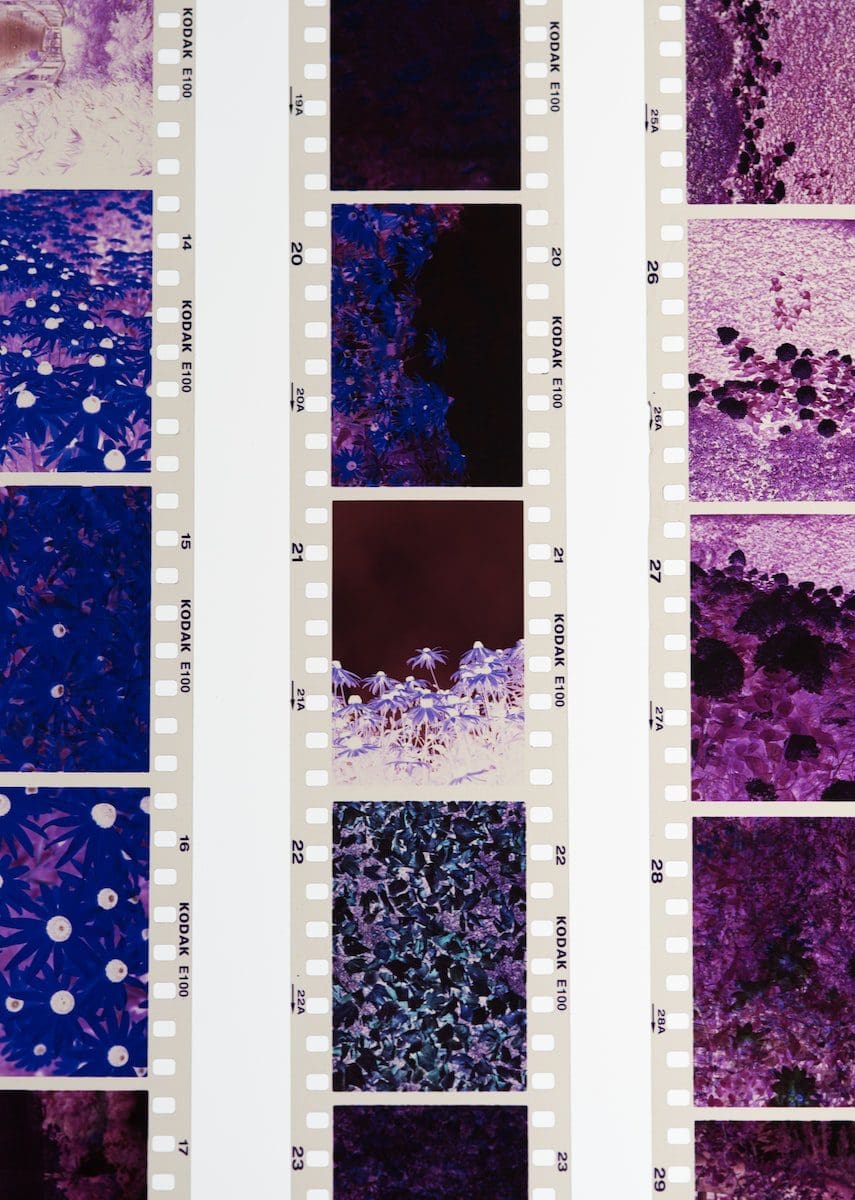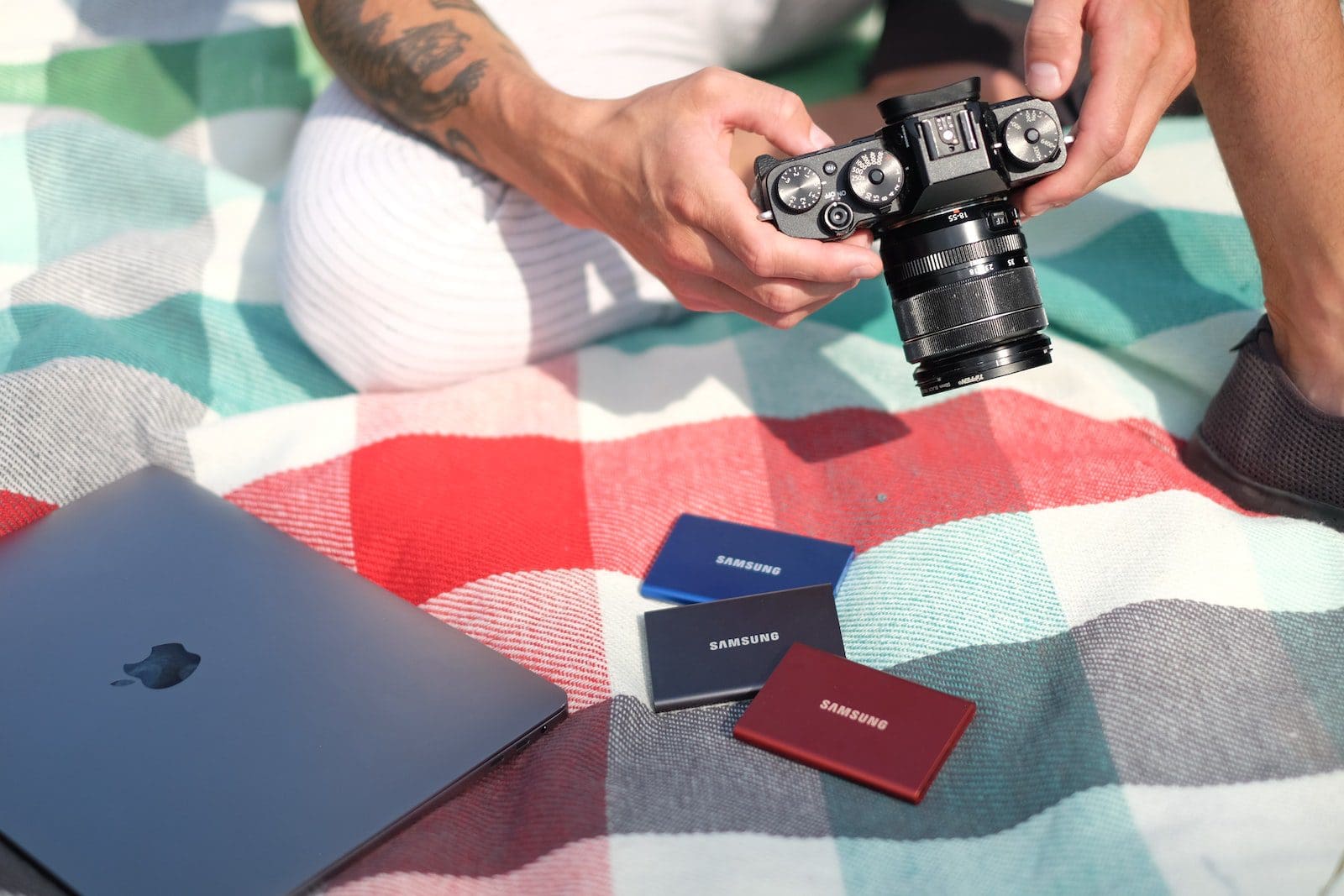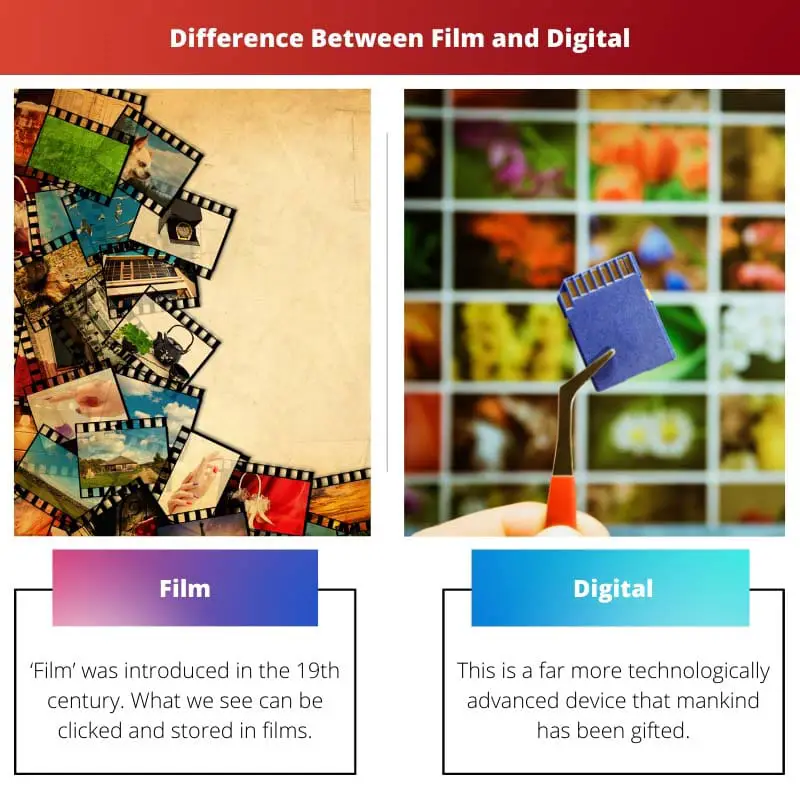We can all unanimously agree that technology has made our lives considerably more adventurous. We could never imagine that one day we will have devices that help us click on what we see right before us.
Now, with technology, man can not only click what he witnesses but can also amplify its aesthetics by editing it. This is possible because of the transition from using films to digital.
Key Takeaways
- Film photography uses light-sensitive chemicals to capture images, while digital photography employs electronic sensors.
- The film produces a distinct aesthetic quality, whereas digital offers instant results and more efficient editing options.
- Digital photography allows for easier storage and sharing, but the film offers a more tactile experience and archival longevity.
Film vs Digital
The difference between Film and Digital is that while the former uses a film to click what we see and stores the clicked image in a roll, the latter is more technologically advanced and stores all the images in a memory chip which is easily accessible at all times and offers the option of editing.

‘Film’ uses a roll of film to click the image that we click, and it stores it in the roll itself. The number of films is limited and needs to be purchased quite often.
Therefore, capturing images using a film camera is more challenging as one has to keep a tap on the number of pictures clicked to avoid finishing the roll without realizing it.
‘Digital’, as the name suggests, is more technologically advanced. Instead of using a film, it uses a memory chip to store the clicked image.
The memory chip has an amount of space and does require pictures to be clicked mindfully to avoid losing out on space, but it still offers much more space.
Comparison Table
| Parameters of Comparison | Film | Digital |
|---|---|---|
| Medium of Storage | The image is stored in a roll | The image is stored in a memory chip |
| Method of Developing Image | The method of development requires the aid of chemicals | The clicked image can be developed by transferring the content from the memory chip |
| Time Taken | The process takes time | The process is fast and easy |
| Convenience | All the images are stored in the roll; therefore, it needs to be purchased quite often | The images are stored in a memory chip and it is quite convenient |
| Editing | The images cannot be edited while in a roll | The images can be edited in the camera itself |
What is Film?
‘Film’ was introduced in the 19th century. What we see can be clicked and stored in films.
The process of developing the image happens to be a little cumbersome, though. It has to be developed in a room where no light can enter, and sheets have to be soaked in a chemical solution and hung.
After a considerable amount of time, as the solution works its magic, we see the image appearing on the sheet.
The picture clicked with it has a denser concentration of colors, thus, making the image-saturated in appearance.
The picture looks aesthetically pleasing to the eyes, but if one prefers images with less warmth, then one might have to look hard for options.
Since it was introduced a long time ago, it wasn’t as advanced as modern cameras.
The roll, once exhausted, has to be purchased over and over again; therefore, capturing every image requires precision on the part of the cameraman to avoid wasting the roll unnecessarily.
Furthermore, the image that is clicked cannot be instantaneously edited in the camera. To add on, the size of the camera is relatively bigger.

What is Digital?
This is a far more technologically advanced device that mankind has been gifted. Now what we click can be easily stored in a memory chip that has a certain amount of space.
Depending on the number of pictures one clicks on a regular basis, a device with high memory storage can be opted for.
The process of developing the photo is not cumbersome at all, as it can be produced with minimum effort. The images can also be transferred from one device to the other by simply inserting the memory chip into the other device.
Thus, making storage of the content possible on your phone or computer.
The images that are taken do not have a dense concentration of colors. Therefore, it may appear that the pictures lack warmth.
However, this is not really an inconvenience as it offers us the option of editing the image. This is a feature that particularly appeals to the younger section of society.
One does not have to run errands to buy a film again and again, thereby making it a valuable addition. Once the storage has reached its maximum capacity, the contents can be transferred to a different device.
The size of the camera is not very big, thus, making it quite handy.

Main Differences Between Film and Digital
- While the images on a film are stored in the roll itself, the images can be stored in a memory chip when using digital.
- In order to develop a clicked image on a film, we require a dark room and chemical solutions. On soaking a sheet in the chemical solution, the image can be developed. On the other hand, when a picture has to be developed from a digital, the process is much easier as it can easily be transferred by using the memory chip.
- The pictures clicked using a film have a denser concentration of colors. In contrast, the pictures that are clicked on a digital do not have a dense concentration of colors and appear to be lighter.
- The cameras that use film are big and heavy. In contrast, the cameras that are digital are more compact and aesthetic and make carrying them around significantly more feasible.
- When images are clicked on a film, it is not possible to edit them instantaneously. On the other hand, the cameras that use digital are technologically superior, thereby making editing of images as we click them a possibility.





